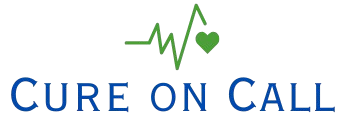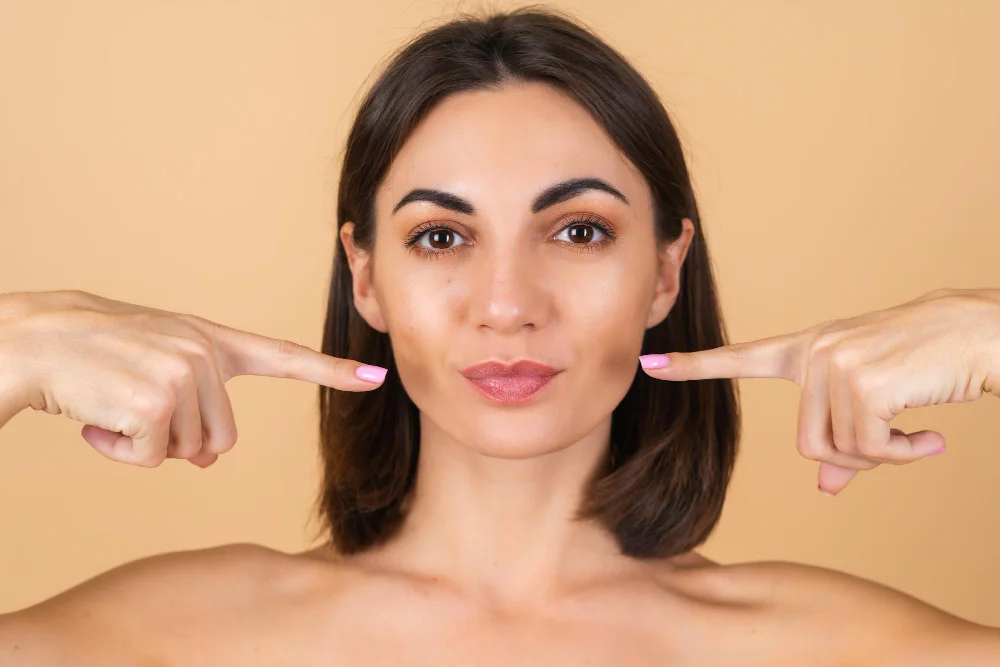Have you ever looked in the mirror and wondered why those stubborn chin hairs keep showing up no matter how often you pluck?
I’ve been there too. And if you’ve been diagnosed with PCOS (Polycystic Ovary Syndrome), chances are you’re familiar with the emotional toll of unwanted facial hair. For many women, it’s not just about appearance—it chips away at confidence, disrupts routines, and raises questions that often go unanswered.
When I was first diagnosed with PCOS at 24, my GP told me it was “common” and offered birth control as a fix. But I wasn’t convinced. I didn’t want to mask the symptoms—I wanted to understand and treat the root cause. Over the next two years, I experimented with natural approaches, spoke to endocrinologists, researched relentlessly, and tracked every improvement. Today, I want to share what worked, what didn’t, and what you can realistically expect when trying to manage facial hair naturally.
What Causes Facial Hair Growth in PCOS?
PCOS is a hormonal condition that affects up to 1 in 10 women of reproductive age. One of its hallmark symptoms is hirsutism, or excessive hair growth, especially in areas where men typically grow hair—like the chin, upper lip, chest, or stomach.
The Role of Androgens
Women with PCOS tend to produce higher-than-normal levels of androgens (male hormones like testosterone). These hormones can trigger dormant hair follicles to grow thicker, darker hair in unwanted areas.
“Androgens are the root driver behind hirsutism in PCOS,” says Dr. Aisha Khan, an endocrinologist at the London Hormone Clinic. “But their expression is influenced by insulin resistance, stress, diet, and even sleep.”
Understanding this hormone-insulin-stress loop is key to tackling the problem naturally.
Can You Really Reduce Facial Hair Growth Naturally?
Yes—but it’s not a magic overnight solution.
The natural path requires patience, consistency, and a multi-pronged approach. Here are the proven, science-backed methods that can make a noticeable difference:
1. Balance Blood Sugar Levels (The Foundation)
High insulin levels stimulate the ovaries to produce more androgens. Reducing insulin resistance is often the first and most powerful step.
What Worked for Me:
- Low-GI Diet: I switched to a whole food-based, low glycaemic index (GI) diet. My energy stabilised and sugar cravings reduced.
- Intermittent Fasting: A 14:10 approach (fast for 14 hours, eat within a 10-hour window) helped regulate my insulin.
- Cutting Refined Sugars & White Carbs: Within three months, I noticed my facial hair became finer and grew slower.
Study Insight: A 2017 study in The Journal of Clinical Endocrinology & Metabolism found that dietary changes alone can reduce testosterone by up to 25% in women with PCOS.
2. Spearmint Tea – Nature’s Anti-Androgen?
It may sound too simple, but spearmint tea has shown promising results.
Research Spotlight: A 2010 Turkish study observed women who drank two cups of spearmint tea daily had significantly lower free testosterone levels after five days.
I personally added two cups a day, morning and night. After about two months, I noticed slower regrowth on my chin and upper lip. It’s not a cure, but it’s a supportive ally in your routine.
3. Supplement Smartly
Some supplements have shown real potential in reducing androgen levels or improving insulin sensitivity.
The Essentials I Tried:
- Inositol (especially Myo-Inositol + D-Chiro): Helped regulate my periods and reduce breakouts.
- Zinc: Plays a role in hormone balance and hair follicle health.
- Vitamin D: I was deficient—correcting it made a clear difference in my mood and skin.
Always consult with a healthcare provider before starting any supplement protocol.
4. Reduce Chronic Stress
Cortisol (your stress hormone) can trigger androgen production too.
My Stress Toolkit:
- Yoga and slow walks instead of intense HIIT sessions
- Journaling before bed to calm my racing thoughts
- Daily 10-minute meditation (I used the Insight Timer app)
The result? Not only did my skin improve, but my cycles became more regular—and yes, facial hair reduced too.
5. Ditch Harsh Hair Removal Methods
Tweezing daily can irritate the skin and cause inflammation, making things worse.
What Helped Instead:
- Dermaplaning once every 2–3 weeks
- Natural sugar waxing (with honey + lemon)
- Turmeric + Gram Flour Mask (used twice a week to weaken hair follicles)
These methods reduced irritation and inflammation over time—and oddly enough, less irritation seemed to slow the regrowth too.
6. Focus on Gut Health
Emerging studies show a link between gut microbiome imbalance and PCOS symptoms. Fixing your gut may indirectly improve hormonal balance.
Practical Steps:
- Add fermented foods (like kefir, sauerkraut, and yoghurt)
- Avoid antibiotics unless essential
- Take a high-quality probiotic (especially with strains like Lactobacillus rhamnosus)
FAQs
Does weight loss help reduce facial hair in PCOS?
Yes—losing even 5–10% of body weight can significantly lower androgen levels.
How long does it take to see results?
For me, it took around 3–6 months of consistent changes to notice visible improvement. Expect slow but steady progress.
Are natural methods as effective as medications?
They can be—especially when combined. Natural methods work on the root causes, while meds manage symptoms.
Is spearmint tea safe for daily use?
Yes, for most people. Stick to 1–2 cups/day and consult your doctor if you’re on medication.
Final Thoughts: It’s a Journey, Not a Quick Fix
If you’re dealing with PCOS-related facial hair, know this—it’s not your fault, and you’re not alone. The natural route isn’t about achieving perfection. It’s about taking back control of your body one small change at a time.
You deserve to feel confident in your skin. And with the right strategy—grounded in real experience and supported by science—you absolutely can.
Have you tried any of these methods? What worked for you—and what didn’t? Let’s share, support, and grow together. Drop a comment below and let’s keep the conversation going.
Useful External Resources




